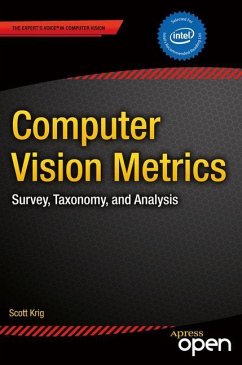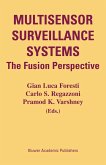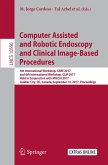This work provides a complete taxonomy of the varied approaches used to describe visual features. Existing literature is scattered across research journals and a few sparse chapters here and there in computer vision textbooks. This work provides a framework by which visual feature metrics can be compared and contrasted, leading to a better understanding of existing methods and pointing the way forward to the grand challenges and emerging areas of research to yield better metrics and increased image understanding.
Visual image analysis is accelerating with the advent of 3D depth cameras, higher resolution media, better sensor color, and more and more images and visual information available online including YouTube and many still images. The compute challenges presented by analyzing the vast amounts of visual information will need to be overcome in order to bring about the next wave of visual computing applications and services for everyday life. This book will pave part of the way.
Computer Vision
Metrics provides an extensive survey and analysis of over 100 current and
historical feature description and machine vision methods, with a detailed taxonomy
for local, regional and global features. This book provides necessary
background to develop intuition about why interest point detectors and feature
descriptors actually work, how they are designed, with observations about
tuning the methods for achieving robustness and invariance targets for specific
applications. The survey is broader than it is deep, with over 540 referencesprovided to dig deeper. The taxonomy includes search methods, spectra
components, descriptor representation, shape, distance functions, accuracy, efficiency,
robustness and invariance attributes, and more. Rather than providing 'how-to' source
code examples and shortcuts, this book provides a counterpoint discussion to
the many fine opencv community source code resources available for hands-on
practitioners.
Visual image analysis is accelerating with the advent of 3D depth cameras, higher resolution media, better sensor color, and more and more images and visual information available online including YouTube and many still images. The compute challenges presented by analyzing the vast amounts of visual information will need to be overcome in order to bring about the next wave of visual computing applications and services for everyday life. This book will pave part of the way.
Computer Vision
Metrics provides an extensive survey and analysis of over 100 current and
historical feature description and machine vision methods, with a detailed taxonomy
for local, regional and global features. This book provides necessary
background to develop intuition about why interest point detectors and feature
descriptors actually work, how they are designed, with observations about
tuning the methods for achieving robustness and invariance targets for specific
applications. The survey is broader than it is deep, with over 540 referencesprovided to dig deeper. The taxonomy includes search methods, spectra
components, descriptor representation, shape, distance functions, accuracy, efficiency,
robustness and invariance attributes, and more. Rather than providing 'how-to' source
code examples and shortcuts, this book provides a counterpoint discussion to
the many fine opencv community source code resources available for hands-on
practitioners.









